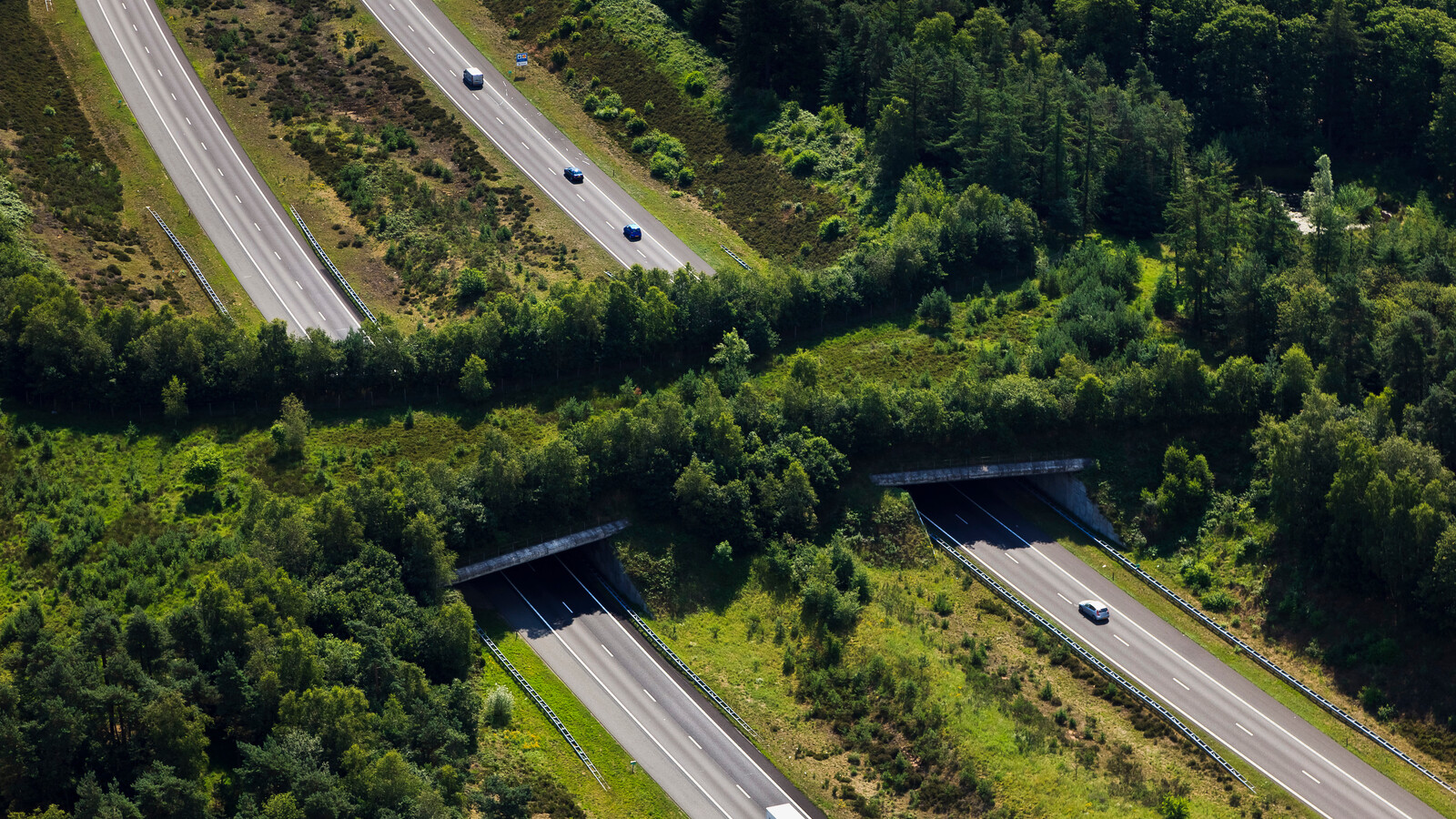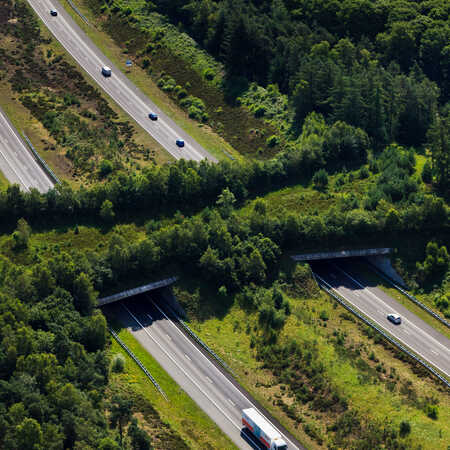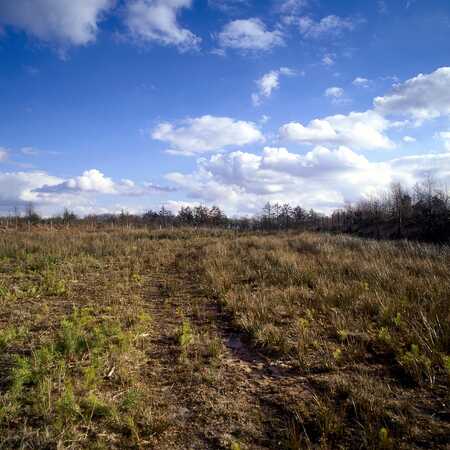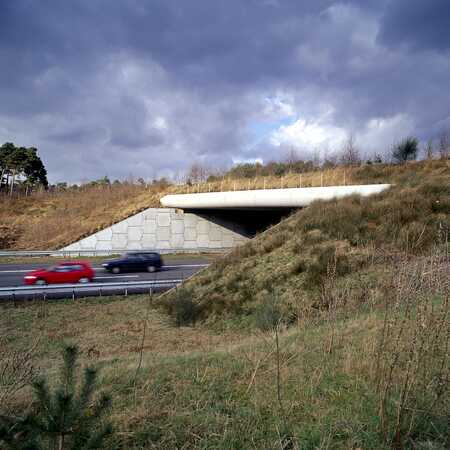0123
A Pioneering Wildlife Crossing
In the middle of the 1990s, the Dutch authorities developed what was called an National Ecological Network (Ecologische Hoofdstructuur, EHS), which now goes under the name of Netherlands Nature Network (Natuurnetwerk Nederland, NNN). The idea was to align data and policies to strengthen vulnerable wildlife areas, for example by creating connections between existing patches of nature. A loss of biodiversity is best countered by giving plants, insects, birds and animals opportunities to find each other and form attractive biotopes. Healthy populations require genetic diversity and the prevention of inbreeding.
The motorway A1 crosses through De Hoge Veluwe National ParkTo make up for the unfavourable effects of such a barrier, the authorities planned the first wildlife crossings. One crossing was planned on the stretch between exit Stroe and exit Assel, near exit Kootwijk, where the median strip is extra wide (up to 80 meters). Architectural studio ZJA did the design for this wildlife crossing, which was completed in 1998 and named after Dr Harm van de Veen, an ecologist who was actively engaged in the efforts to connect natural areas.
Armoured Earth
The first requirement for the design of a wildlife crossing is to create a landscape element that is safe and easily readable for the motorist approaching it. The passage underneath should be smooth and easy. Equally important is to take into account the perception of wild boars, deer, badgers, frogs and squirrels as they have to be able to find their way across the motorway.
The wildlife crossing needs a design that makes sure the sounds and visible movements of the traffic do not disturb the animals. Seen from above, a wildlife crossing therefore has the shape of a sandglass. On either side 1.5m high embankments are covered in bushes to frame an open space with a width of 80m. This wide space gradually narrows towards the point of the crossing itself, where it is about 30m wide. Trees and shrubs create a natural screen. The precise measurements and proportions of these elements were tuned to the behaviour of the shiest animal the crossing was meant to accommodate: the red deer. The sandglass shape produces a nudging effect for the deer to find the direction of the crossing, so they will have a comfortable trip across the road.
The walls of the structure consist of concrete elements sunken into the earth, a technique called terre armée or armoured earth. The span itself is cast on site and it has rounded edges, covered with earth and planted with trees and shrubbery.
Long-term Design
The specific quality of this type of designs is that they are in tune with the time scale and dynamics of the natural environment. The wide green median strip and the growth of the trees and shrubs, along with the spread of algae and moss, means the wildlife crossing Kootwijk looks completely different now from when it was built in 1998. In this case, designing a structure that merges with the landscape means taking into account the long-term dynamics of nature and treating this piece of infrastructure as an element of wild garden design. An accomplished wildlife crossing gives the impression that the motorway is hidden inside the landscape in order to smuggle people across, undetected by animals.
Architect: ZJA
Client: The Dutch Road and Transport Authority
Year: 1998
Project: #123
Related
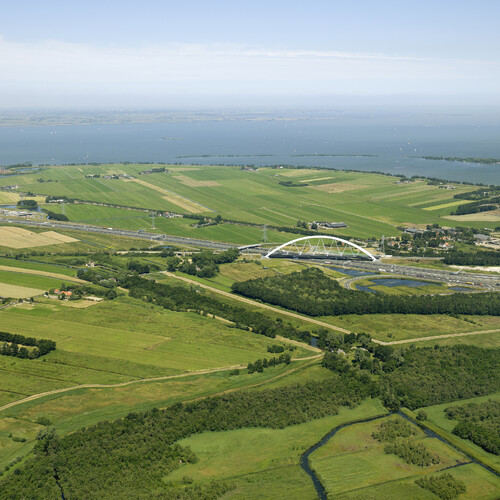
Road expansion A1/A6 Diemen – Almere Havendreef
Between Amsterdam and Almere
It seems an odd question: is it possible to drastically improve the infrastructure of the northern part of the Randstad, between Diemen and…
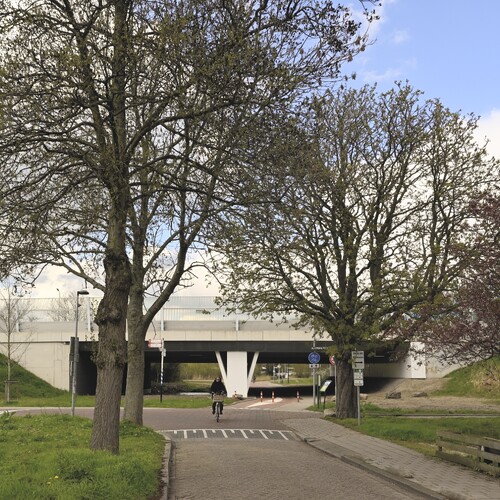
A20 viaduct, Schiedam
On short notice, an existing concrete viaduct in the Rotterdam ring road needed to be strengthened. To achieve this a steel reinforcement…

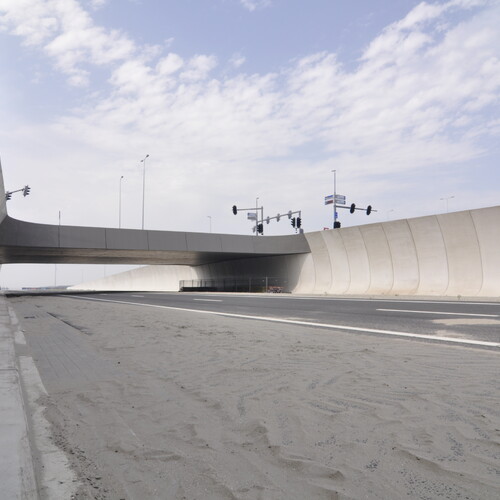
Dune viaducts, Rotterdam
In 2012 the infrastructural works of the Maasvlakte 2, an artificial island in the Port of Rotterdam, will be brought into use. The area is…
